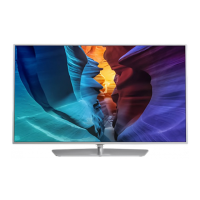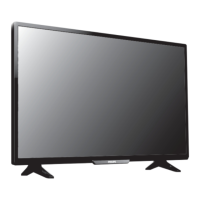Do you have a question about the Philips 40PFH4200/88 and is the answer not in the manual?
Allows pausing and recording broadcast from digital TV channels using a USB Hard Drive.
Emphasizes reading safety instructions before using the TV.
Provides instructions for mounting the TV stand or wall mount.
Details on HDMI connections, including CEC, DVI to HDMI, HDCP, and ARC.
Details on operating connected devices with the TV remote via HDMI CEC.
Guidance on connecting a Home Theatre System (HTS) to the TV via HDMI or SCART.
Troubleshooting steps for loud noise or no sound issues with HTS.
Information on requirements and usage of USB Hard Drives for pause/record.
Steps for connecting and formatting a USB Hard Drive for pause/record functions.
Guide on connecting a computer to the TV to use it as a PC monitor.
Steps to switch the TV on from standby and put it into standby mode.
Detailed explanation of the TV remote control buttons and their functions.
How to switch between TV channels and use the channel list.
Procedures for updating and installing TV channels.
Steps to reinstall channels without affecting other TV settings.
Procedure for performing a complete new TV installation.
Selecting and installing DVB-T or DVB-C reception.
How to view and navigate the TV guide for programme schedules.
Scheduling and recording TV programmes using the TV guide.
Viewing photos, playing music, and watching videos from a connected USB device.
Instructions for pausing and resuming digital TV broadcasts using a USB Hard Drive.
Requirements for recording TV programmes: USB drive, digital channels, guide data.
Steps to record the current programme or schedule future recordings.
How to view previously recorded programmes using the remote control.
Adjusting various picture settings like style, contrast, colour, sharpness, and noise reduction.
Adjusting Gamma, Tint, Custom tint, Video contrast, and Brightness.
Adjusting sound settings, including style, bass, treble, surround mode, and headphones volume.
Configuring auto volume levelling, clear sound, and TV speakers output.
Selecting where and how to output TV sound (TV speakers, HTS, EasyLink).
Listing connectivity ports on the rear and side of Pxx4100 and Pxx4200 models.
Instructions for updating the TV software using a USB memory device.
Guidance for resolving common issues with channels, general operation, and picture.
Troubleshooting steps for no digital channels and missing previously installed channels.
Solutions for TV not switching on, creaking sounds, and unresponsive remote control.
Troubleshooting steps for no picture, distorted picture, sound only, and poor reception.
Troubleshooting steps for no sound or poor sound quality issues.
Troubleshooting HDMI connection issues, including HDCP and intermittent disruptions.
Contact information for Consumer Care and repair services, including model/serial number details.
Important safety instructions for TV usage, including risk of injury and electric shock.
Instructions for securing the TV using a wall bracket to prevent falling.
Precautions to prevent electric shock or fire hazards related to TV usage.
Safety guidelines for lifting, mounting, and handling the TV to prevent injury or damage.
Precautions to prevent TV toppling over and causing injury, especially to children.
Ensuring proper ventilation around the TV to prevent overheating.











